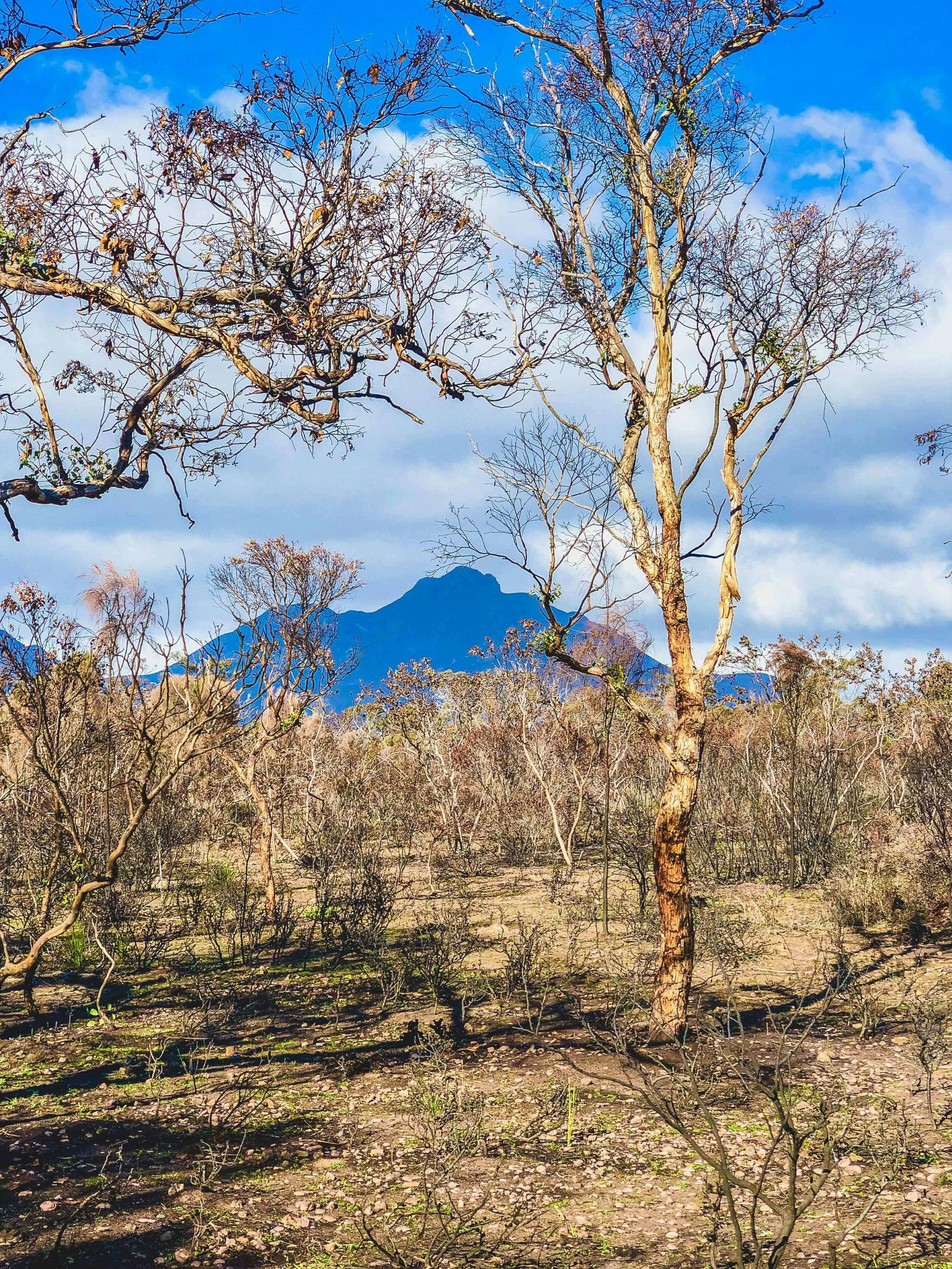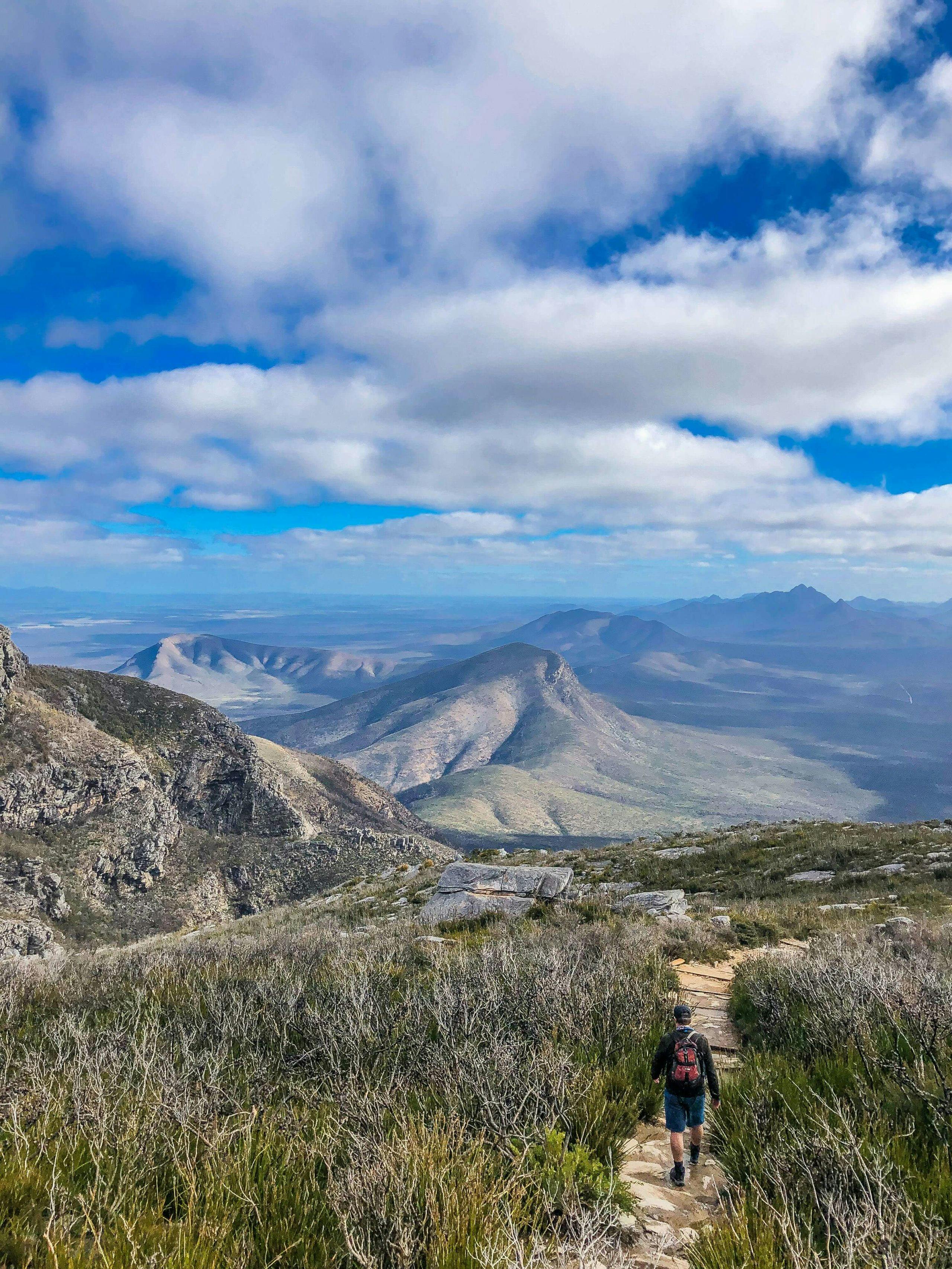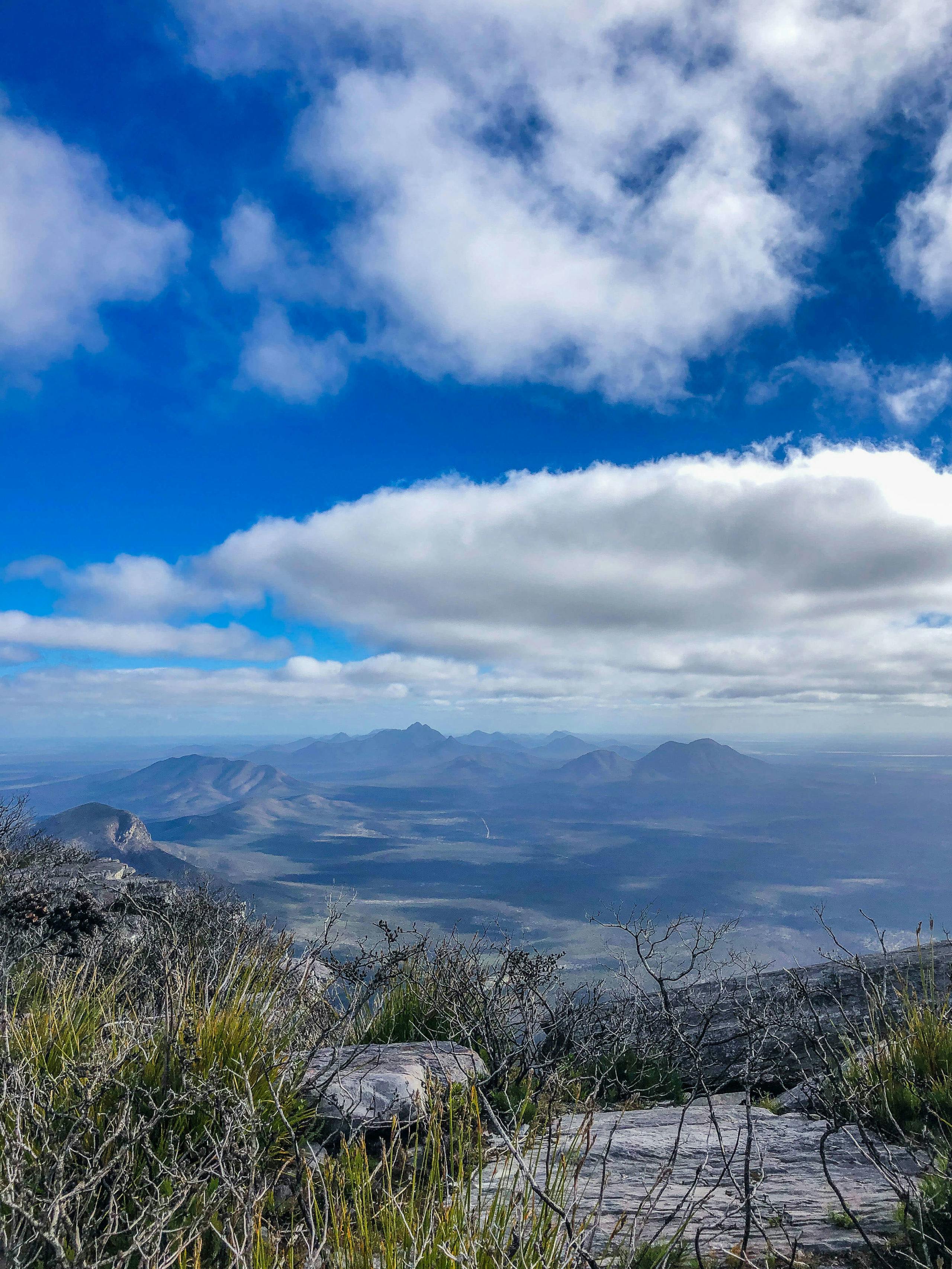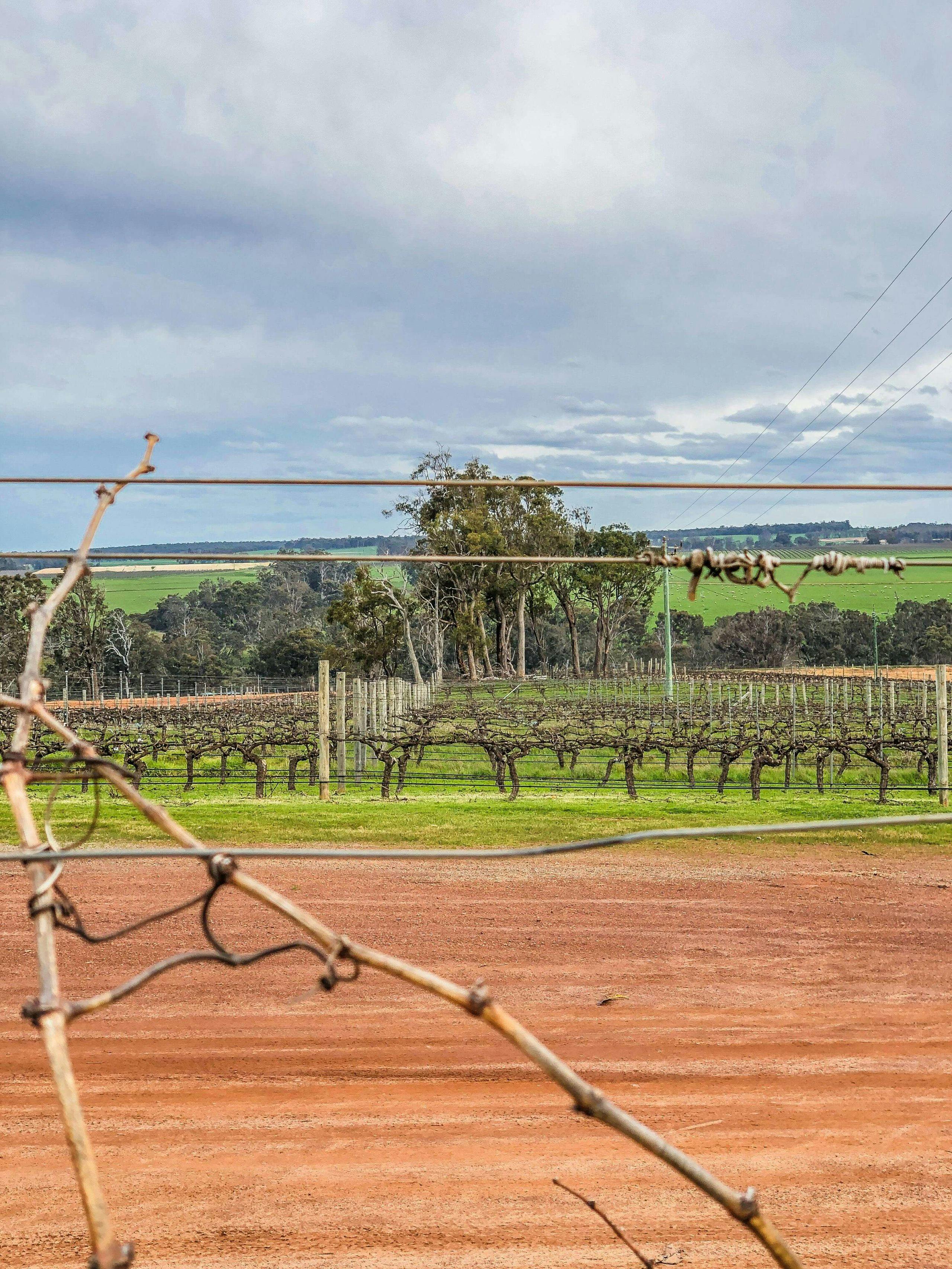How To Walk (And Wine) Bluff Knoll’s New Trail

Words by Cassandra Charlick.
Let’s be honest, Western Australia is one of the best places in the world to be, full stop. With sandy beaches, world class surf, deserts filled with wildflowers, restaurants and wineries with doors wide open and some of the world’s oldest rock formations; right here in our backyard you can tick almost every type of travel goal.
Hang on a minute. But what about the heights? For those that miss alpine air and snowy peaks, you might be surprised to find out that in just a few hours’ drive from Perth you can get your fix.
Bluff Knoll
Bluff Knoll is the second highest peak in Western Australia, and the highest peak in the South West. Set your compass south from Perth, and after 400km on the well surfaced tarmac of Albany Highway you’ll hit the Stirling Ranges.

Entering The Park
Driving into the park, you might notice the charred remains of the bushland surrounding the granite peaks, and the fresh green undergrowth pushing through. Look closely and you’ll be able to catch wildflowers that are springing back to life from the ashes. This past summer’s bushfires ravaged the region, with more than a third of the Stirling Range National Park extensively damaged from lighting strikes between Boxing Day and the New Year.
The Trail
While the flora and fauna is starting to bounce back, the trails have also undergone some fantastic upgrades throughout the repair process, making them even more accessible to climb now. Once you arrive at the carpark, be sure to take a toilet break at the facilities and admire the view before setting off on the 3km trail to the top (and then back again!).
While the 20% gradient means you’ll certainly feel the burn in your legs, the trail is much safer and easier to manage after all of the steps were replaced by hand by the hardworking staff at the Parks and Wildlife Service at the Department of Biodiversity, Conservation and Attractions (DBCA). More than 50 tonnes of material was brought in by helicopter and on foot, with cleanly compacted paths and a new bridge halfway up giving a helping hand to those that find heights a challenge.

What To Bring
Be sure to take your time and bring plenty of water and snacks for the hike. It’s also a good idea to grab a jacket as the wind can pick up at the top of the peak and weather can change throughout the course of the day. Winter can even see a touch of snow if you are lucky. Graded level four, it’s a challenging hike, yet totally manageable for most people. Of course, as with all outdoor pursuits, slap on some sunscreen and a hat, wear sturdy footwear and check the weather before you head off – it can get a bit slippery when wet and is definitely not a climb to take in bad weather.
Subscribe to our free newsletter!

Where To Go For A Drink After
One of the bonuses of the Stirling Range National Park, is its proximity to a number of outstanding wine regions. Riesling lovers and Syrah aficionados are in for a treat, with some surprisingly affordable drops given their quality and pedigree. Refuel with lunch at one of the wineries that offer food, or simply grab a bite on the road and head on to taste some of the local produce before pulling your boots off back at your accommodation. If you head about an hour and half out west, you can sample some of Frankland River’s finest. Frankland Estate Wines is a family affair, established in 1988 and produces award winning wine. After sampling their iconic wines, don’t miss their interesting small batch wines starring lesser known varieties and European style winemaking. Nearby Alkoomi winery is surrounded by vineyards for as far as the eye can see, and is a wine lovers paradise with a seriously delicious and extensive portfolio to work through. You can even stay on site at their bookable accommodation if the thought of getting back in the car is just too much after a day of striding and sipping.

If you choose to head south post-hike instead of west, you’ll hit the Porongurups, just north of Albany and well worth lingering over with glass in hand. There are a number of wineries to choose from but be sure to pop into Dukes Vineyard to see owner Duke Ranson, whose ‘retirement’ project to plant a winery has now earned him some of the highest accolades in the country for his wine. Castle Rock Estate, Mount Trio and Zarephath wineries are also great options, along with Mount Barker’s Plantagenet Wines. One of the founding wineries of the region and responsible for some great examples of Pinot Noir, Riesling, Shiraz and Chardonnay. It’s also the only winery which has been granted use of the ‘three lions’ coat of arms with official ties back to the Plantagenet English royal house. Do be sure to call ahead prior to visiting cellar doors, as bookings are advised and tastings are by appointment only.
Check out our ultimate guide to Bluff Knoll here!